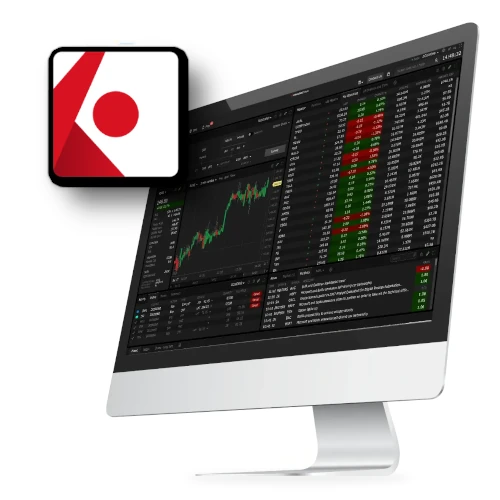In this video I do a quick review of the state of the markets: QQQ (Nasdaq) and SPY (S&P 500). I then go over a trading strategy for reverse splits with two examples KSCP and UAVS which went up in value after completing a reverse split. I then present GCTK which is currently undergoing a reverse split.
The State of the Market: QQQ and SPY
The stock market has shown remarkable resilience in recent weeks, with indices like the S&P 500 and NASDAQ demonstrating strong bullish sentiment despite geopolitical tensions and internal market conflicts. News such as the pause in tariffs has further bolstered investor confidence, creating an environment ripe for strategic trading opportunities.
Despite recent market volatility, the S&P 500 and NASDAQ have shown strong upward momentum. The S&P 500’s ability to recover from gaps down and remain above its 20-period moving average signals robust investor confidence. Similarly, the NASDAQ has maintained its position above key trend lines, suggesting a consolidating sideways channel that could offer strategic entry points.
What is a Reverse Stock Split?
Reverse stock splits, often misunderstood, can lead to dramatic price fluctuations and present unique opportunities for astute investors. A reverse stock split is a corporate action where a company reduces the number of its outstanding shares, effectively increasing the share price.
GCTK will conduct a 1-for-20 reverse split, every 20 shares are consolidated into one. While this doesn’t change the company’s overall market capitalization, it can significantly impact the stock’s price dynamics and investor perception. Companies often use reverse splits to meet exchange listing requirements or to make their stock appear more attractive to institutional investors.
Market Resilience and Reverse Split Opportunities
Historical examples like Knight Scope and UAVS demonstrate how reverse splits can lead to significant price increases post-split. For instance, UAVS experienced substantial gains following its reverse split, driven by high short interest and favorable market conditions. These patterns highlight the potential for reverse splits to create lucrative trading opportunities.
Current Opportunity: GCTK and the Role of Warrants
One stock currently under the microscope is GCTK, which undergoes a 20-to-1 reverse split tomorrow will transform its share price from approximately 5 cents to $1, altering investor perception and trading dynamics.
Warrants, which allow holders to purchase shares at a predetermined price, can incentivize upward price movement. In GCTK’s case, the warrants have exercise prices set at $1.30 and $1.80, creating a potential catalyst for the stock to rise toward these thresholds.
Risks and Rewards in the Current Market
While reverse stock splits can present compelling opportunities, they are not without risks. The initial price drop following a reverse split can deter some investors, and the stock’s subsequent performance is heavily influenced by market conditions, company fundamentals, and investor sentiment. For example, UAVS, a drone company, remains susceptible to market volatility and geopolitical developments, which could impact its price trajectory.
If you haven’t signed up for an online broker to trade stocks and crypto yet. Take a look at Interactive Brokers. They have the best commissions of any discount broker out there.
Get IB Now

Key Takeaways for Investors
1. Understand the Mechanics: Reverse stock splits can drastically alter a stock’s price and trading dynamics. Familiarize yourself with the process and its implications.
2. Monitor Market Conditions: Geopolitical tensions and internal market conflicts can heighten volatility, creating both risks and opportunities.
3. Leverage Historical Patterns: While past performance doesn’t guarantee future results, historical examples like UAVS and Night Scope can provide valuable insights.
4. Evaluate Catalysts: Factors like warrant offerings, short interest, and company news can significantly influence post-split price movements.
5. Assess Risk-Reward Scenarios: Reverse splits can offer high-reward opportunities, but they require careful risk management and strategic planning.
Final Thoughts on Reverse Stock Splits
Reverse stock splits are a double-edged sword, offering both risks and rewards in a volatile market. By understanding the mechanics, monitoring market conditions, and leveraging historical patterns, investors can navigate these corporate actions with greater confidence.
As always, thorough research and a disciplined approach are essential to capitalizing on the opportunities they present. Whether you’re eyeing GCTK, UAVS, or other stocks undergoing reverse splits, staying informed and adaptable is key to success in today’s dynamic market environment.



